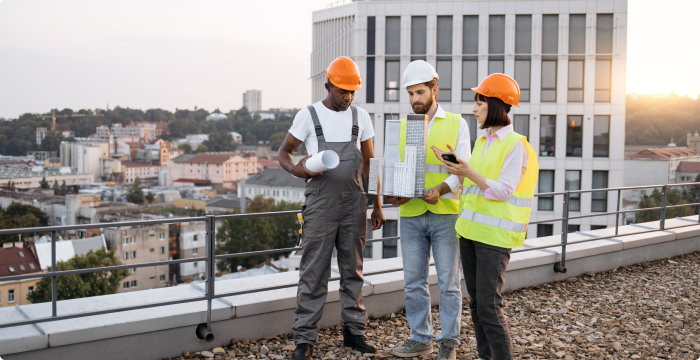
When it comes to roofing for commercial properties, the stakes are high. A well-designed and properly executed commercial roof not only protects the business and its assets but also contributes to the overall energy efficiency and aesthetic appeal of the property. Let's delve into the key considerations for selecting the right roofing system for commercial structures.
Commercial properties often have larger footprints, and the choice between a flat or sloped roof design is a critical consideration. Flat roofs are common for commercial buildings, offering practical space utilization for HVAC units, solar panels, or outdoor recreational areas. However, sloped roofs can provide better drainage and add a distinctive architectural touch.
Commercial roofs endure substantial wear and tear due to their size and exposure to the elements. Choosing durable materials is paramount. TPO (Thermoplastic Olefin), EPDM (Ethylene Propylene Diene Monomer), and modified bitumen are popular choices for flat roofs, while metal and single-ply membranes are common for sloped roofs. Assessing the expected lifespan of materials is crucial for long-term cost-effectiveness.
Commercial properties are increasingly embracing energy-efficient and sustainable roofing solutions. Cool roofing materials that reflect sunlight and reduce heat absorption can contribute to lower energy bills. Additionally, integrating solar panels or green roofing systems can align with corporate sustainability goals and potentially qualify for tax incentives.
Compliance with local building codes and zoning regulations is a non-negotiable aspect of commercial roofing projects. These regulations vary by location and may dictate aspects such as fire resistance, wind uplift resistance, and environmental impact. Working closely with a roofing professional who understands local codes is essential to avoid costly legal complications.
Accessibility for maintenance is a critical consideration for commercial roofs. Regular inspections and maintenance are vital for extending the lifespan of the roof. Ensuring safe and convenient access for inspections, repairs, and equipment installations is essential. Roofing systems with walkways or access points facilitate ongoing upkeep.
Commercial property owners must carefully balance their roofing budget with the expected return on investment. While investing in high-quality materials and professional installation may have a higher upfront cost, it often pays off in reduced maintenance expenses and increased property value over time. A thorough cost-benefit analysis is crucial for making informed decisions.
Selecting the right roofing system for a commercial property involves a combination of practical considerations, regulatory compliance, and long-term planning. Collaborating with experienced roofing professionals ensures that the chosen roofing solution aligns with the unique needs and goals of the business. By prioritizing durability, energy efficiency, and adherence to local regulations, commercial property owners can safeguard their investments and promote the success of their enterprises.